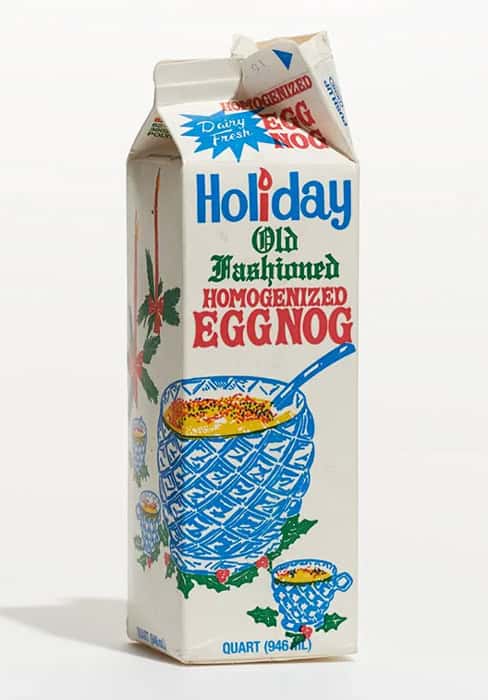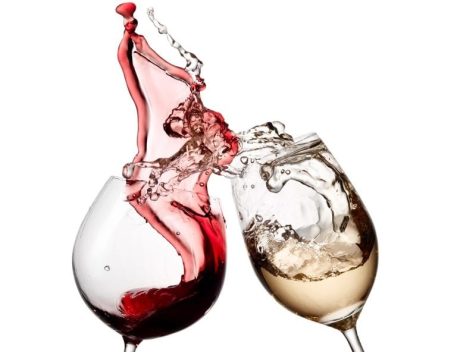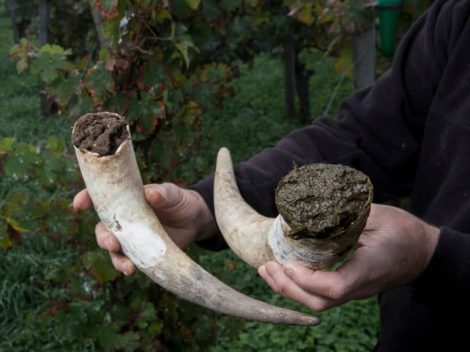by Mattia Ferraresi
"One quart of cream, one quart of milk, twelve tablespoons of sugar, one pint of brandy, half a pint of rye whiskey, half a pint of Jamaican rum, a quarter pint of sherry. First, combine the liquors, then separate the yolks from the whites of the eggs and add sugar to the beaten yolks. Slowly pour in the milk and cream while stirring. Whip the egg whites to stiff peaks and gently fold them into the mixture. Let it rest for a few days in a cool place. Drink frequently." This is how George Washington prepared his "eggnog," the quintessential American holiday beverage, a seasonal triumph of cinnamon and saturated fats. It also served as a patriotic symbol that the first American president offered to visiting governors and dignitaries at his residences in New York and Philadelphia before the White House was even built.

George Washington’s recipe
The only missing element in the president's handwritten recipe is the number of eggs. Given the proportions, experts estimate at least a dozen were required. The rather indulgent idea of mixing milk, beaten eggs, sugar, and alcohol originated in Europe, but its celebration occurred in the New World. In the vast farmlands of America, eggs were more common than in the Old World, where they long remained a luxury for the aristocracy. Harsh northern winters in the United States likely contributed to its popularity. Before refrigeration became commonplace, eggnog was often consumed warm or at room temperature—a tradition that persists in parts of Northern Europe, particularly Iceland, where warm eggnog is served as a dessert.
From Posset to Colonial America’s signature drink
The British "posset," a fermented milk-based drink, is likely a medieval ancestor of eggnog. Some European monasteries have records of posset cocktails with added eggs and figs to enrich the mixture with sugars and proteins. The English nobility transformed it into an upscale delicacy with sherry and spices, but its widespread popularity emerged in the 18th century when it became a symbolic cocktail of Colonial America. Expensive sherry, brandy, and the associated British taxes were replaced by affordable Caribbean rum and other sugarcane-based spirits. The drink’s history is inseparable from the enslaved people brought from Africa to the Caribbean and then North America. It was an energising drink for field labourers and could be made with any available spirit.
Eggnog’s Americanness led to regional adaptations across the continent. Mexicans enjoy “rompope,” Puerto Ricans use coconut milk in their “coquito,” and Peruvians mix whipped egg with pisco.
The name’s origins
The origin of the name is uncertain. "Egg" is indisputable, but "nog" might derive from "grog," a term used by pirates for rough rum variants, or from "noggin," a wooden cup used for alcoholic concoctions. Both theories hold some truth.

A holiday staple
Perhaps it’s the spices—cinnamon, nutmeg, cloves, or other improvisations—that have made eggnog a holiday classic in America’s endless cycle of celebrations, each with its rituals and flavours. Eggnog bridges the end of Halloween, shines at Thanksgiving, and peaks during Christmas, often consumed in mugs as carols play in the background and Mr. Scrooge begins his redemption.
One legendary incident tied to eggnog is the infamous Christmas Eve brawl of 1826 at West Point. Cadets, prohibited from drinking alcohol, smuggled whiskey into the base and mixed it into eggnog. The resulting chaos ended with 70 arrests.
Family traditions and mixology
Traditionally, every family has its own eggnog recipe, varying in spices, egg quantities, milk-to-cream ratios, and preferred liquors. Some include vanilla, lemon zest, or other aromatic touches. The method of beating eggs also differs—some whip yolks and whites separately for a creamy texture, while others mix everything together for a thinner drink.
Modern mixologists have embraced eggnog, creating variations like the Baltimore Eggnog with Cognac and Jamaican rum, or the Rum Flip by bartender Allen Katz, who whisks whole eggs by hand. The Tom & Jerry, a rich 1820s cocktail with whole eggs and vanilla extract, inspired countless derivatives. Dale DeGroff’s Uncle Angelo’s Eggnog features equal parts bourbon and fruity brandy.

The industrial side
For millions of Americans, eggnog isn’t an artisanal concoction but a ready-to-drink product in supermarket cartons or gallon jugs—a triumph of industrial processes and preservatives. Approximately 56 million litres of packaged eggnog are sold annually. According to the American Egg Board, the drink is cherished by the working class as an affordable taste of Christmas. The US Food and Drug Administration permits drinks with as little as 1% egg yolk to be labelled as eggnog, provided they contain at least 6% dairy fat.
Vegan eggnog
The traditional blend of milk, eggs, and fats has faced scrutiny, particularly in a cultural climate favouring plant-based alternatives. Vegan eggnog has emerged, made with oat, almond, or cashew milk for creaminess, and thickened with arrowroot powder or other agents. Vegan bases are often paired with optional liquors. Oat milk is especially popular. These alternatives have reshaped the eggnog market, allowing it to persist on festive tables despite evolving dietary preferences.

Made in Italy: Vov, Zabov, and Bombardino
Italy boasts its own egg-based liqueurs, though none are tied specifically to Christmas. The oldest and most famous is Vov, the "comforting zabaglione" with Marsala wine, created by Padua-based pastry chef Gian Battista Pezziol in 1845. It gained prominence in the Viennese court. Its main competitor, Zabov, replaces Marsala with brandy, appealing to northern markets also shared with Dutch Advocaat. Across the Alpine region, Bombardino—a mix of zabaglione, cream, coffee, and brandy—has become a staple. This warming drink was invented in the 1970s in a lodge in Sondrio and quickly gained popularityr


 God Bless those who don’t forego Stracciatella on the evening of December 25th. Here’s the recipe from a renowned Roman trattoria
God Bless those who don’t forego Stracciatella on the evening of December 25th. Here’s the recipe from a renowned Roman trattoria Hidden in an old district of Perugia lies one of Italy's cosiest wine bars
Hidden in an old district of Perugia lies one of Italy's cosiest wine bars Christmas Eve dinner and Christmas Day lunch: festive traditions rooted in Solstice feasts
Christmas Eve dinner and Christmas Day lunch: festive traditions rooted in Solstice feasts Historical breakthrough: Italy will also produce dealcoholised wines. Lollobrigida signs the decree
Historical breakthrough: Italy will also produce dealcoholised wines. Lollobrigida signs the decree If you say Syrah, you say Cortona. The story of Stefano Amerighi and other Tuscan producers
If you say Syrah, you say Cortona. The story of Stefano Amerighi and other Tuscan producers






